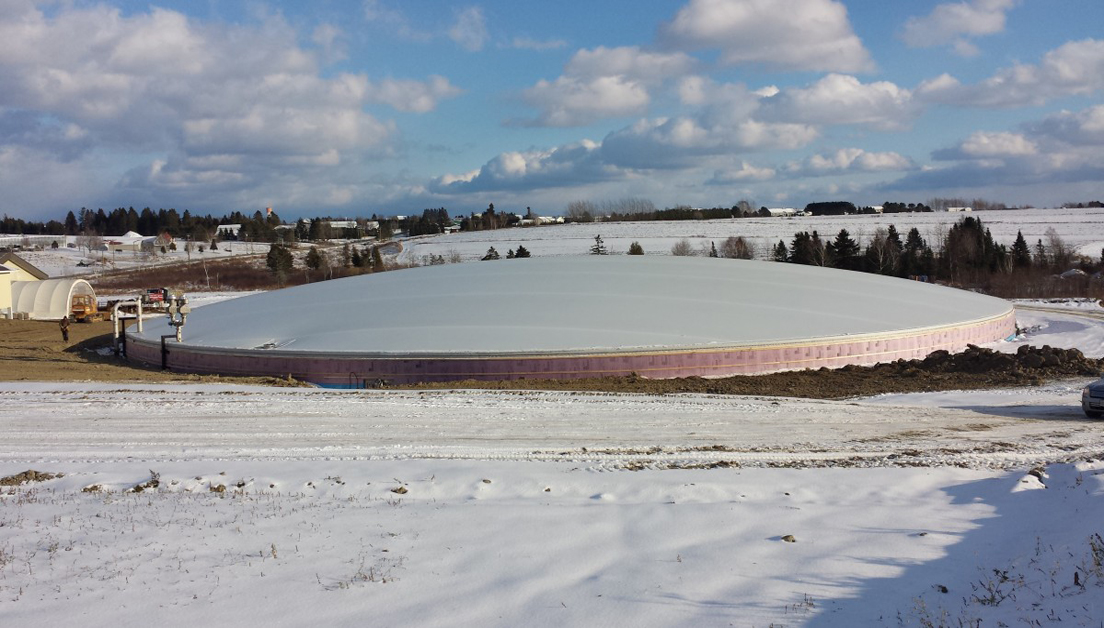LaForge Bioenvironmental operates a waste-to-energy facility in a northwest farming community of New Brunswick, Canada. The system is located on a 1,000 acre (405 hectare) mixed farming operation, which includes the LaForge Holsteins dairy. LaForge planned to expand its 500kW combined heat and power (CHP) system to more than double the capacity by converting an existing holding tank into a digester. Complete Senergy Systems (CSS), a digestion-based technology company, was contracted to develop the conversion.
Challenge
CSS required a cover for the 200-foot-diameter (61 meter) concrete tank to collect biogas produced from the anaerobic digestion of mixed wastes. The cover had to be durable and resist changing environmental factors such as temperature, wind, sun, and precipitation. The cover had to allow for planned operations, including mixing and seasonal level changes, but also needed to be gastight to prevent biogas from escaping, which created odor and safety concerns.
Solution
Evoqua’s Geomembrane Technologies was contracted to develop a custom cover designed to suit the unique application with a focus on providing as many advantages as possible for operations and maintenance. The final design was determined through open dialogue between the developers, operators, and Evoqua’s Geomembrane Technologies. The perimeter connection of the cover to the tank is an example of a detail which needed to be simple, reliable, and cost-effective. Connections to the cover for gas piping were incorporated.
Results
The cover can operate under both positive or negative pressure. Under positive pressure, the cover inflates into a dome and stores biogas. When inflated, the gas space under the cover provides insulation. Mixing patterns are not affected and large liquid level variations can be accommodated. The cover is operated under positive pressure for the majority of the time. The dome shape is stable and sheds rainwater. Under negative pressure the cover rests on the liquid surface, which is the safest mode for walking on the cover to retrieve samples or for maintenance.
The LaForge operation now produces up to 1.5 MW of electricity and is tied into the New Brunswick power grid. The spent liquid is spread as organic fertilizer.